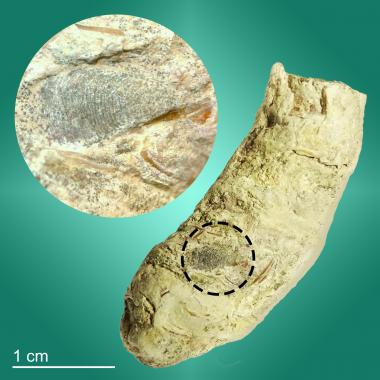
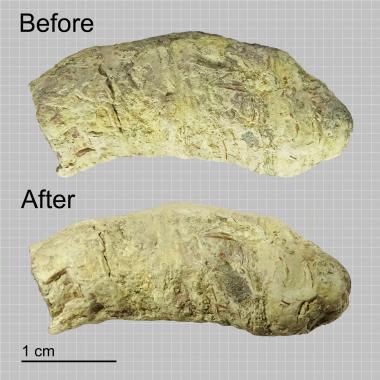
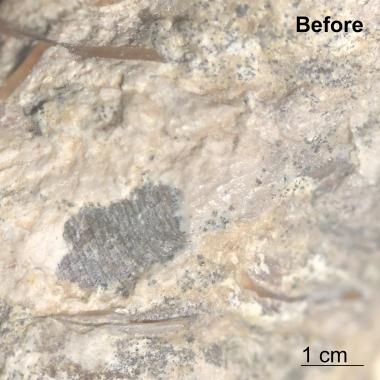
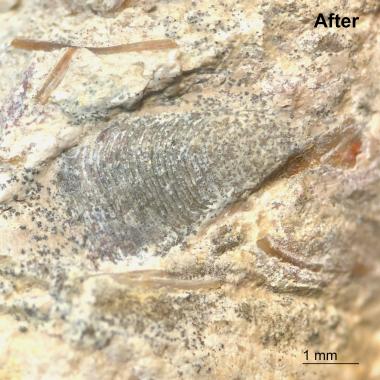
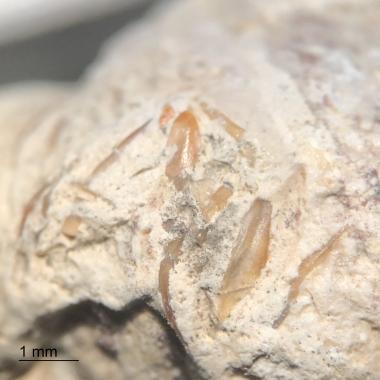
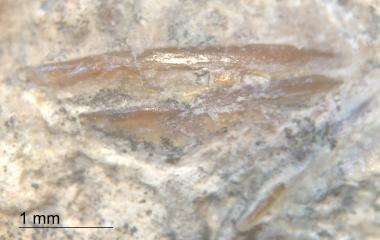
When it comes to coprolites, it is not always easy to identify exactly what was eaten. This is one such case. Originally, I thought this coprolite had fish skull (photo 3) and bone/tooth inclusions (photos 5 and 6). After discovering similar "fish skull" inclusions in a separate coprolite were actually the lower jaws of a baculite, I decided to expose a little more of the textured inclusion on the surface of this specimen.
Under the microscope, I was able to remove enough of the phosphatic material to positively identify the inclusion as a baculite lower jaw (photo 4). On the far right of that photo, the hinge is visible and part of the other jaw exposed. These jaw structures look similar to bivalve shells. In fact, at one time they were thought to be just that. They are often referred to as aptychi.
Now that we know baculites were on the menu, I feel more confident identifying the other inclusions as radulae (mollusk teeth). Originally, I thought these were fish bones or teeth, but something looked a little different. The sheen wasn't quite what I was used to seeing. Now I know the reason. Unlike the teeth of vertebrates which have enamel, radulae are comprised of chiton (like bug exoskeletons). Today, animals like ls like snails and slugs have rows and rows of these tiny little teeth.
